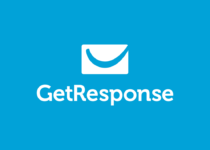Mailchimp Review
MailChimp started it’s life back in 2001, and has since grown to a ridiculous 15 million customers — making it currently the world’s most popular email marketing service.
The tool offers everything from sending emails, setting up automations and running targeted campaigns to your email subscribers, seemingly everything you need to grow your business with email.
But just how well does MailChimp work for email marketing?

MailChimp Review
For this review, I fired up MailChimp to see how it performs as a standalone tool, and in comparison to popular alternatives.
From here on out, I’ll share my experiences using this software, along with what I liked and didn’t like along the way.
If you want a more in-depth breakdown of the process I used to review MailChimp, I suggest you check out my email marketing tools roundup.
System & Segmentation

This is a big one because MailChimp is one of the few popular email marketing tools that are still heavily list-based.
There’s really no debating the fact that tag-based systems are better, and quite frankly, it boggles my tiny mind that MailChimp refuses to make the leap.
Currently, subscribers are counted multiple times if they appear on different lists, and the only way around it is to use the inherently limited and overly complicated segmentation options.
You can create “groups” to segment lists, “segments” to group subscribers, as well as “hidden fields” that can be used to emulate tags, but like I said, this whole system is more clunky and confusing than it is useful.
For example, what if you wanted to identify and target subscribers who clicked a specific link in one of your emails? Well, since MailChimp doesn’t let you add behaviour-based tags, it’s very difficult to pull off.
You can get pretty close with post-campaign segmentation, but that approach will count for ANY link clicked within a campaign.
And it is technically possible by downloading your campaign report, identifying subscribers who clicked a specific link, and re-uploading a CSV of those subscribers into a new segment…
…but seriously, I can’t think of a more convoluted process for what should just be a simple click of a button.
This is easily one of the biggest issues I have with MailChimp, and I feel it’s one that ultimately prevents it from being as strong as they could be in today’s competitive market.
What’s even more frustrating is that the technology does exist inside MailChimp, but it’s limited to a one-off segmentation within an automation sequence.
As for things like site-tracking and tagging subscribers based on page visit or interaction, you can forget about it. (At least until MailChimp reintroduce their “goals” feature.)
Verdict
MailChimp seems to be stuck in a list-based era, and it’s not clear when, or in fact if they’ll ever make the transition to what is quite obviously a better subscriber management system.
Automation

So I just briefly touched on automations above, but let’s dive into what is arguably the most important aspect of any email marketing tool today.
MailChimp offers a bunch of what they call, “workflow recipes”, which give you common a pre-made automation framework to build from, instead of having to start from scratch.
Is MailChimp Right For You?
Now that I’ve covered all the different features and functions of MailChimp, weighing up the pros and cons and giving my experience along the way — let’s talk about YOU.
As with any tool, MailChimp isn’t going to be the right choice for everyone, so let’s get to the bottom of who exactly this email marketing tool is suitable for.


